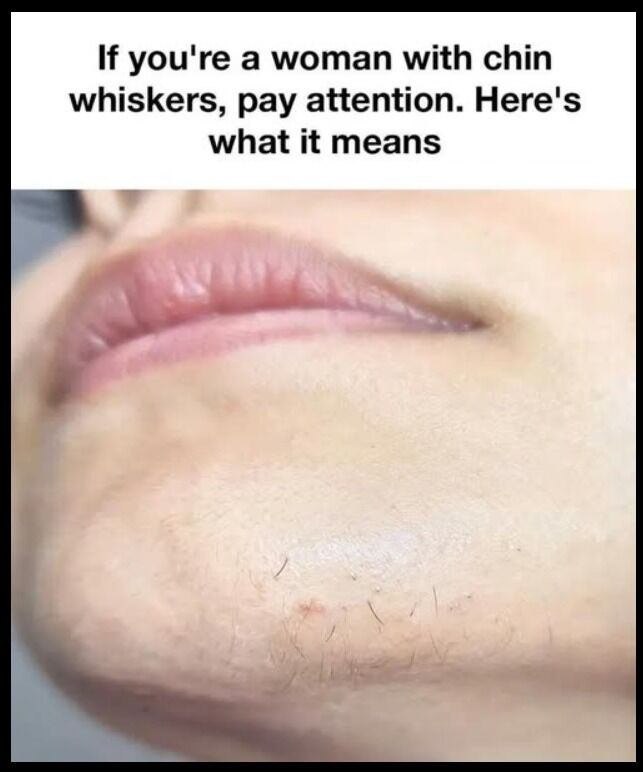Once anagen winds down, the follicle enters the catagen phase, a brief transitional period that typically lasts two to three weeks. Here, the follicle shrinks and disconnects from its blood supply. Growth stops abruptly, and the hair becomes what’s known as a “club hair”—still attached, still visible, but no longer receiving the nourishment that keeps it alive. It’s essentially waiting for eviction.
The final stage, telogen, is the resting phase. It lasts a few months and ends with the shedding of the old hair. The follicle then resets and a new anagen phase begins, pushing a new hair to the surface. This constant cycle explains why plucked chin hairs eventually return—often seemingly thicker, even though the diameter hasn’t truly changed. The blunt regrowth just makes it look more noticeable.
But what determines whether chin hair is faint and barely noticeable—or coarse, dark, and stubborn—comes down mostly to one powerful force: hormones. Specifically, androgens.
Androgens, a group of hormones that includes testosterone, exist in both men and women. Men simply produce more. These hormones tell certain follicles to mature and produce thicker, darker hair. That’s why facial hair appears in teenage boys—those follicles are activated by rising androgen levels.
Women also have androgens, just in lower quantities. But if androgen levels rise, or if the follicles become unusually sensitive to normal hormone levels, chin hair can appear where it never used to. This phenomenon has a name: hirsutism.
For women, hirsutism often shows up as coarse hair on the chin, upper lip, chest, or abdomen. It can be triggered by several factors. Puberty, pregnancy, and menopause all involve hormonal shifts that can throw the androgen–estrogen balance off. Conditions such as Polycystic Ovary Syndrome (PCOS), adrenal gland disorders, or thyroid issues can ramp up androgen production. Even medications that affect hormone levels can contribute. But sometimes, there’s no dramatic medical cause. Genetics alone can dictate whether a woman experiences random chin hairs or very little facial hair at all.
As women age, estrogen naturally declines—especially after menopause. With less estrogen to balance out androgens, those hormones gain more influence, often waking up dormant follicles. That’s why many women who never had chin hair suddenly notice a few wiry strands in their fifties or sixties. It’s normal, but that doesn’t make it any less surprising the first time it happens.
Even without hormonal changes, aging affects the skin and follicles. Some follicles shrink and stop producing hair entirely, while others respond more strongly to androgens. The result? Thinning hair where you want it—like your scalp—and thicker, unexpected strands where you don’t.
Understanding this balance between the hair cycle and hormone activity helps make sense of why chin hair behaves the way it does. A hair that keeps returning in the exact same spot simply indicates a healthy follicle going through normal anagen–catagen–telogen rotations. It’s functioning exactly as nature designed it to. The only difference is hormonal influence has made that particular hair thicker, darker, or more visible than others.
For those who find chin hair cosmetically annoying, there are plenty of options. Tweezing remains the simplest and most common approach—quick, cheap, and effective. Waxing removes more hair at once but can irritate sensitive skin. Threading is precise and avoids heat or chemicals. For longer-term solutions, laser hair removal and electrolysis target the follicle itself. Laser reduces growth significantly but isn’t permanent for everyone; electrolysis is the only FDA-approved permanent method, though it requires time and consistency.
However, if chin hair appears suddenly, increases rapidly, or is accompanied by irregular periods, acne, or weight changes, it may be worth seeing a healthcare professional. Excess androgen production can signal underlying hormonal or metabolic issues that should be checked—not because chin hair is dangerous, but because the imbalance causing it may need attention.
The bottom line is simple: chin hair is normal, common, and far more biologically complex than it looks. It’s the result of a continuous hair cycle shaped by genetics, hormones, and time. Whether it shows up consistently or only pops out occasionally, chin hair is just another expression of the body’s natural systems at work.
And if you choose to remove it, embrace it, or ignore it entirely—that’s a personal choice. The science behind it stays the same.

